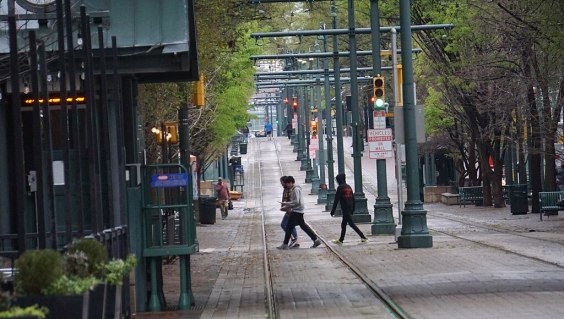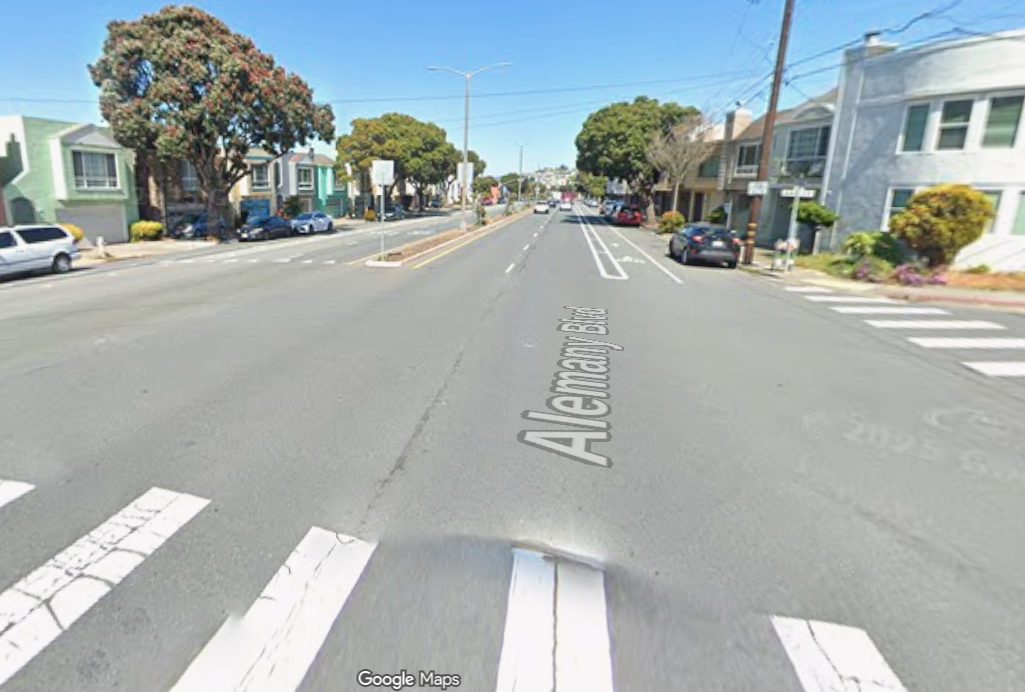Does walkable development really lead to worse traffic congestion? Opponents of urbanism often say so, citing impending traffic disaster to rally people against, say, a new mixed-use project proposed in their backyards. But new research provides some excellent evidence to counter those claims.
A recent study by the Arizona Department of Transportation [PDF] found that neighborhoods where houses are closer together actually have freer-flowing traffic.
Researchers compared some of greater Phoenix's denser neighborhoods -- South Scottsdale, Tempe, and East Phoenix -- with a few of its more sprawling ones -- Glendale, Gilbert, and North Scottsdale. Some interesting patterns emerged.
In the more compact neighborhoods, the average household owned 1.55 cars, compared to 1.92 in more suburban areas. Residents of higher-density neighborhoods also traveled shorter distances both to get to work and to run errands, the study found.
The average work trip was a little longer than seven miles for higher-density neighborhoods; in the more suburban neighborhoods, it was almost 11 miles. Residents of the three compact neighborhoods traveled just less than three miles to shop, while residents of sprawling locations traveled an average of more than four miles. All of this led the more urban dwellers to travel an average of nearly five fewer miles per day than their suburban counterparts.
The density divide also played an important role in transit use. Rates varied from as high as eight percent transit ridership in high-density neighborhoods to as low as one percent in the more sprawling areas.
All of this translated into a reduced strain on roadways in the places that had more people -- running counter to one of the strongest objections to mixed-use development. Comparing one suburban corridor to two of the streets in the more dense neighborhoods, the study found that on the more urban streets, traffic congestion was "much lower," or about half as high (measured by the ratio of the capacity of the roadway to the actual volume of cars on it).
How did more compact neighborhoods manage to have less congestion? It's not just because residents there drive less overall. Two design characteristics also ease traffic, according to AZ DOT. Fine-grained street networks distributed traffic evenly across the higher-density neighborhoods, while every driver in the suburban neighborhoods was funneled onto the same big arterials. At the same time, improved pedestrian conditions in commercial centers made it easier for some drivers to park once and walk from destination to destination, taking cars off the road precisely in the areas that attract the most people.
The results of the Arizona study may not apply everywhere, due to the state's extremely spread out pattern of development. The higher-density neighborhoods still only had between six and seven households per acre, compared with between three and four in the lower-density places. As the report notes, "By Eastern U.S. standards, all of these densities are effectively suburban in character."
But the report controls for a host of factors, strengthening the conclusion that the different travel behaviors were really the result of design, rather than income, say, or the student population.
The Arizona Department of Transportation deserves credit -- first of all, because this is a fantastic, thorough, well-timed study, but also for pointing out the important policy implications. The agency's recommendations include a public awareness campaign about the benefits of mixed-use, compact development; better planning and public engagement tools; and providing incentives for smart planning.
The authors noted, for example, that outdated policies sabotage planning efforts that are beneficial for livability, public health, and the environment in the name of maintaining traffic flow. The supreme irony -- in light of the study results -- is that these policies ultimately fail the congestion test too:
Local planners and planning commissions are still using traditional traffic engineering approaches to assess the impact of development projects. By looking only at traffic congestion levels on adjacent links, ignoring through travel, and failing to account for the efficiencies of mixed-use development on lower vehicle trip rates and VMT, progressive projects are likely to be rejected or unreasonably downsized.
The DOT also concludes that congestion isn't always a bad thing, that density is the key to successful transit, and that short blocks are critical for building vibrant, mixed-use places.





